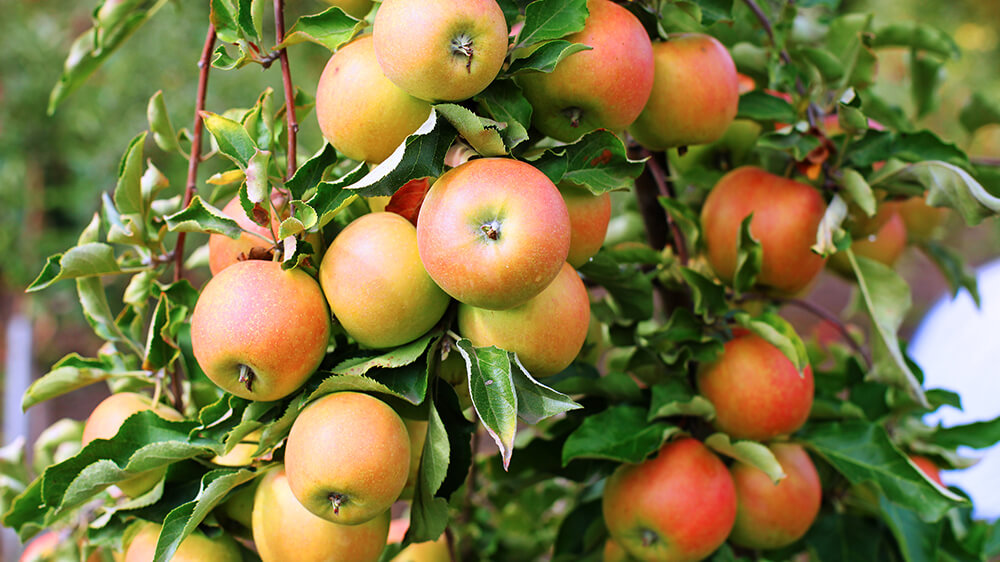
Apple trees are some of the best long-term landscape pieces, because on top of being beautiful and increasing your home’s value, they provide you with buckets full of fruit every autumn. The fragrant blossoms in spring are totally breathtaking, and the autumns full of pies, jams, and ciders are pretty awesome too.
You don’t have to wait until spring to plant trees in your own yard—you can easily transplant them right now, while the soil is nice and warm after a long, sunny summer. Loosen up the soil and add in some compost, get your sapling in place, water it generously until the first frost, and then guard it with some burlap over the winter to protect it from the harsh cold. The following spring, your tree will have soaked up plenty of nutrients from the soil and will be ready to take off!
Remember, apple trees are rarely self-pollinating, so you’ll need to plant more than one together so they can transfer pollen and bear fruit. Ideally, you should mix-and-match different apple varieties that bloom at the same time. To grow a successful assortment of different apples, do a Google search or call up the experts at one of our Alsip locations, and we can help you pick compatible varieties for your own backyard orchard!
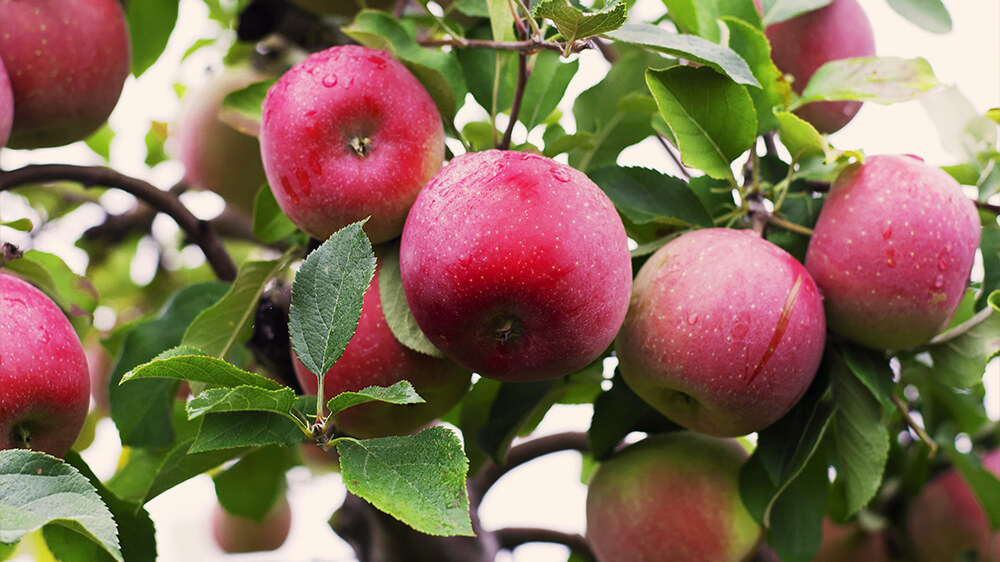
The Best Apple Trees For Zone 5
Most apple trees need a cold winter to properly enter their dormancy cycle and prepare for the following spring, but some varieties are a bit more sensitive to the coldest temperatures we experience in Zone 5. These trees are tough enough to withstand our chilly weather, so they’re great options for gardeners in Illinois/Indiana.
McIntosh
A famously delicious snacking apple, the tart and juicy McIntosh are perfectly crisp, without being too tough, so it’s nice and easy to bite into. Its smooth, non-gritty texture makes it lovely for sauces and apple butters—the perfect addition to a homemade barbecue sauce. The fruits are red with green marbling, and the later they’re harvested, the redder and sweeter they’ll be. Plant these trees in full sun and well-draining soil, and soak the roots in water for 24 hours before planting.
Gala
This is one of the only self-fertilizing trees available, so if you’re certain you can only fit one new tree in the yard, opt for a Gala! It reaches up to 15 feet high and 10 feet across, making it an easily manageable size, and it does best in full sun. It’s tolerant of a range of soils, but does best in well draining soil with frequent, generous watering. The tart fruit is perfect for baking or juicing, and you’ll love the light fragrance of its delicate pink blossoms in spring.
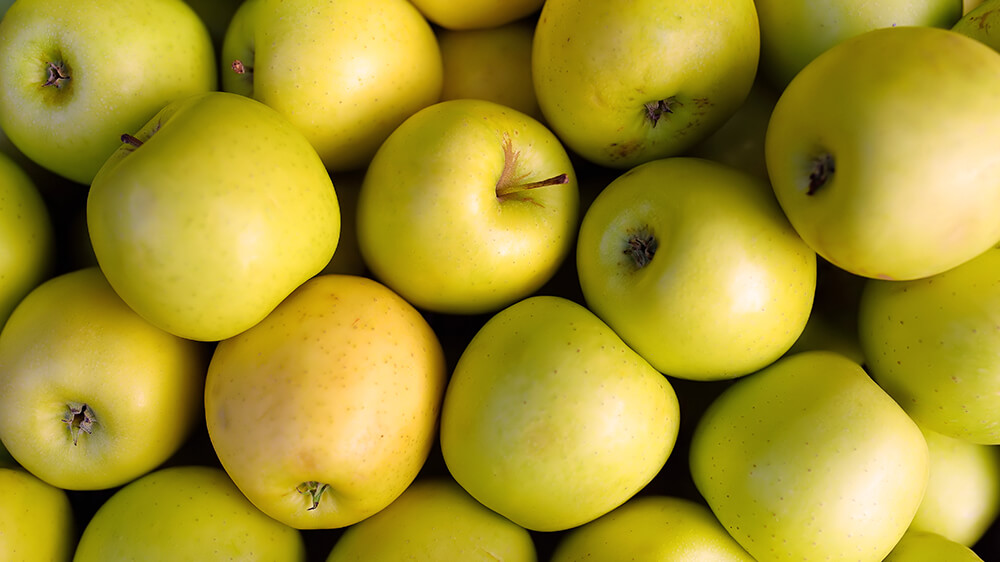
Honey Gold
This sunny yellow variety is quite similar to the Golden Delicious, but with a milder flavour that has a hint of honey sweetness. It’s more cold hardy than the Golden Delicious, making it a popular choice among Northern gardeners. Water it every three days after you first plant it until the roots are well established, and then after that, you can scale back to once every two weeks while it’s actively growing and producing fruit. Prune it every winter to promote healthier growth, and to keep the size a bit more manageable. Unpruned, this giant can reach up to 25 feet tall in 20 years, but pruning can keep it closer to around 15 feet.
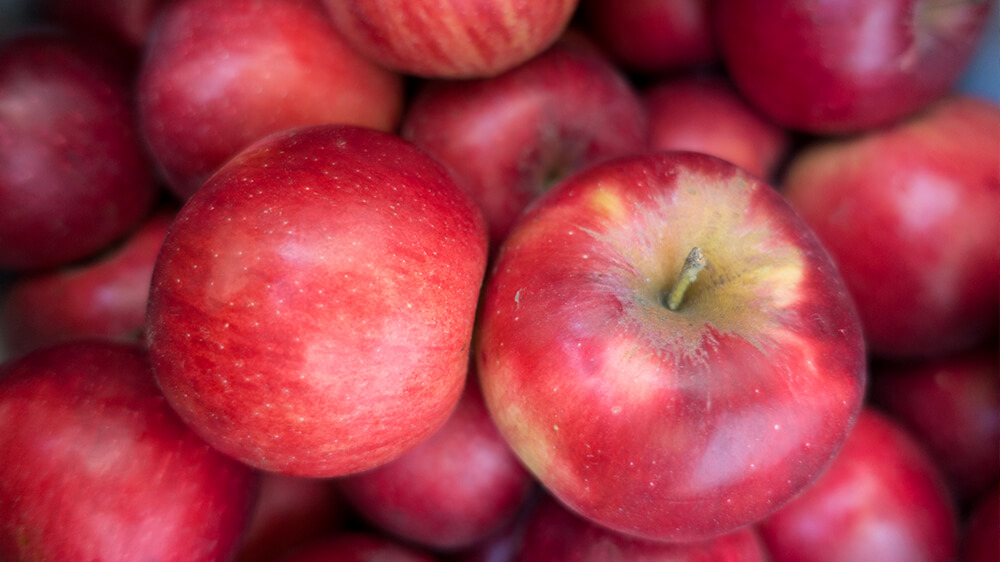
Red Delicious
You’ll love this ruby red variety that sports subtle stripes and a rich, full bodied flavor. In terms of size, you can opt for a dwarf or semi-dwarf variety, so they can range anywhere from 10–25 feet high at maturity. Before planting, do a pH test to make sure the soil is slightly more on the acidic side. Mix in plenty of compost to improve drainage while also making it high in nutrients. It can sometimes show signs of drought stress after long periods without rain, so it helps to use an irrigation system or trickle hose for regular watering. Applying a layer of mulch around the base of the tree will help this cultivar to get enough moisture to keep it steadily producing fruit.
Granny Smith
Easily one of the most popular apples for baking, this ultra-crisp, tangy variety maintains a great shape and never gets mushy when baked into pies and tarts. When eaten raw, they’re delightfully sharp and zesty. Granny Smiths are compatible for cross-pollination with Fuji, Gala, and Red Delicious, so you can plant a mix of these in the yard if you’d prefer a little variety. Plant them within 50 feet of each other for best results, but keep in mind that Granny Smiths can spread about 15 feet across, so don’t plant them too close! Thinning out the blossoms for the first couple years can help to produce healthier fruit that isn’t too densely packed together.
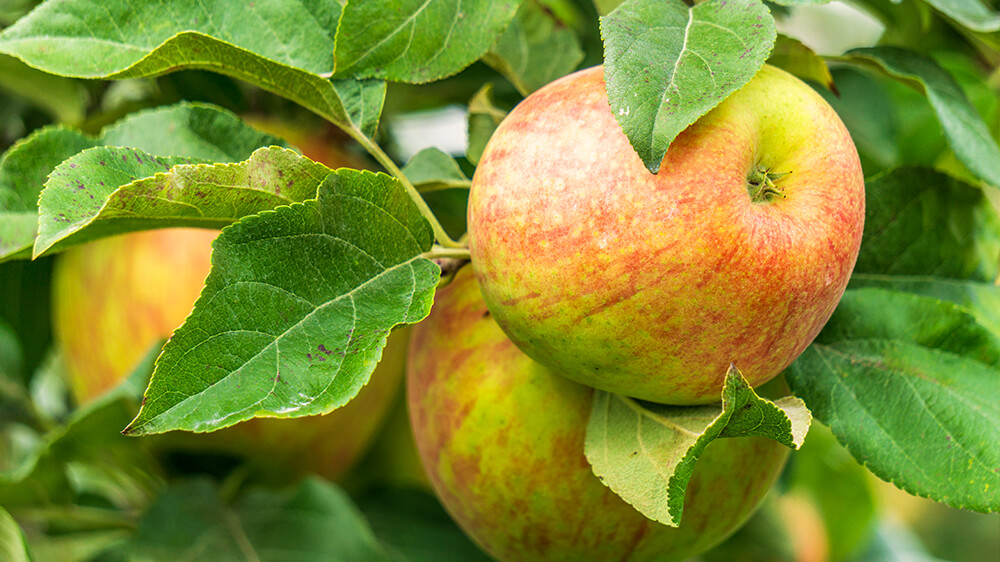
Troubleshooting Apple Tree Pest Problems
Sometimes pests and fungal issues can spring up on your apple trees, but these are both preventable and treatable, so if you take the necessary measures, you shouldn’t lose out on any fruit. Keep an eye out for these warning signs, and try our recommended pest control methods for protecting your trees:
Curling Leaves With Sticky Spots: Aphids are annoying, tiny insects that suck out the sap from leaves, causing them to dehydrate and curl up. They leave behind sticky droppings called honeydew that can begin to rot and cause black spots on leaves. We have plenty of pest control products that can safely eradicate aphids, such as our Bonide Neem Oil formula, made especially for trees and shrubs.
White Powder Coating on Leaves: Powdery mildew can often occur when moisture is trapped within dense plant foliage, and inadequate air circulation causes it to get funky. To prevent this, prune your trees every winter or early spring, to keep the branches thinned out. Treat powdery mildew with our Bonide Revitalize Biofungicide, which is completely organic and can be used the day before harvest!
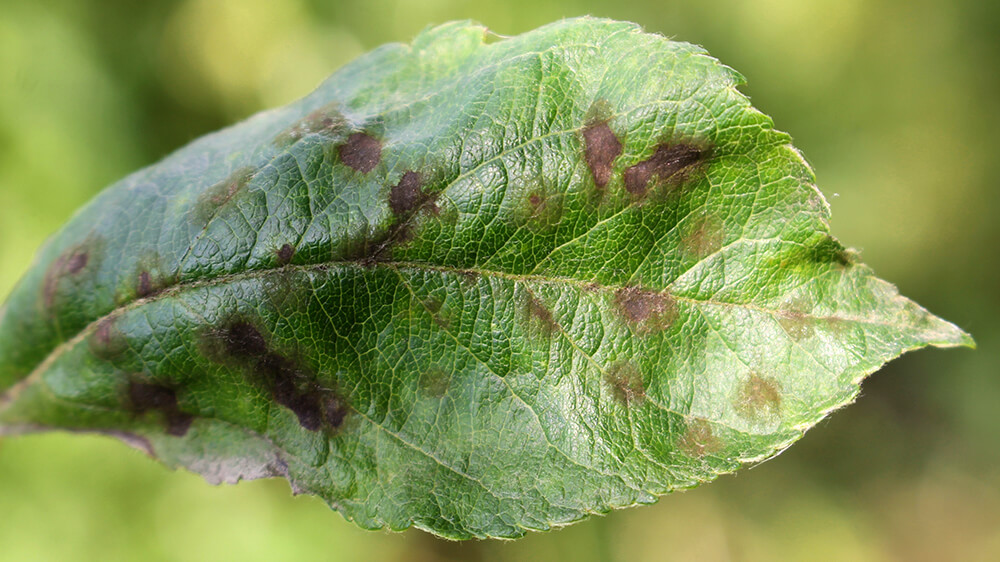
Yellow and Brownish-Green Leaf Patches: Apple scab is a nasty fungus that leaves unsightly, fuzzy blemishes all over fruit tree leaves. If left untreated, leaves will start falling off in the middle of summer. While a copper-based fungicide applied in spring can help to prevent apple scab from appearing, you can use Bonide Orchard Spray as a one-and-done solution for killing fungus fast.
Fruits Covered in Pinprick Holes: Bitter pit is a condition that often occurs in apple trees with larger fruit, and its caused by calcium deficiency and dry soils. As the name suggests, it causes a bitter, unpleasant fruit, so you’ll want to use a calcium supplement or spray to make sure your apples come out sweet and delicious.
Wilting Blossoms: Blossom wilt is a fungus that can totally derail your autumn harvest, so prevention is very important. Keep your yard clean by raking up all the autumn leaves, and make sure your pruning shears are always well sterilized before use. Prune your tree at the end of winter to encourage airflow, and if you notice any diseased plant parts, dispose of them safely and sterilize your tools before every cut you make. Use an organic fungicide like our spray from Dr. Earth, which is gentle enough for those delicate blossoms.

Want to plant some apple trees this fall? Hurry, now is the time to get them in the ground! We’ve got all of the varieties listed here, as well as Cortland, Fuji, Zestar, Grevenstein, Wine Crisp, and Empire. We also offer tree planting services for those who wish, so feel free to give us a call if you’d like to make special arrangements.
